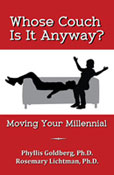Today’s blog is a family affair – the post was written by Ellen Woodward Potts and the photo is of her husband, Dr. Daniel Potts, and his father, Lester Potts. Dr. Potts, a neurologist, has been inspired by his father’s journey through Alzheimer’s disease. Ellen’s family members have also struggled with dementia and she writes a blog that honors and supports caregivers.  Here’s what Ellen has to say:
Here’s what Ellen has to say:
‘As dementia progresses, it becomes more and more difficult to connect with our loved ones. I often get questions about this from caregivers, friends and family alike. This inability to connect causes family and friends to visit less frequently, leaving the person with dementia and the caregiver socially isolated at a time when they need the most support.
How can you connect with a person with dementia? Often, the creative arts are the key. Don’t stop reading! You don’t have to be an artist, musician or have any type talent at all to employ these techniques! They’re very simple and easy to use.
Music: People with dementia usually remember things from the distant past, so choose your songs accordingly. What were her favorite songs from her youth? What music did the person listen to in her late teens and early twenties? If you don’t know, google “top forty songs” and put in the year when the person would have been 18 or 20 years old. You will get a list of what was popular at the time. Play and sing along with these songs, and you may be amazed at what happens. If nothing happens, keep trying! Sometimes, this process takes time.
Additionally, if the person is religious or was in her childhood, try singing and playing the religious songs of her youth. At a point when my father-in-law with Alzheimer’s disease had not spoken in several months and was in an in-patient hospice unit, we began singing familiar hymns. Amazingly, he could sing along! This is a relatively common experience. This excellent video with Validation Therapy pioneer Naomi Feil is an example of this. Music can help bridge the communication gap with people in any stage of dementia.
Art: Lester Potts, a rural Alabama saw miller, was the quintessential child of the Great Depression. He was all about work. He would have considered painting pictures a waste of his time. As Alzheimer’s disease stole more and more of his cognitive ability, he began attending a dementia daycare center where a retired artist volunteered his time. The results were astounding. At a point when he could no longer hammer a nail or change a light bulb, he became a watercolor artist, although he had never painted before. Even in late stage Alzheimer’s disease when he had lost the ability to speak, he could paint visual images of his childhood. Art offered him a method of communication when his verbal abilities had failed.
To do this at home with your own loved one, start with some very simple artist’s supplies, not children’s crayons and coloring books. You can buy the “Paint by Number” kits or just let the person paint whatever he wants. Inexpensive canvases and either watercolors or acrylics are best. There are often starter artist’s kits available that are perfect for this.
Dance: I heard a story recently about a woman who had been a ballet dancer in her youth, but had dementia from strokes in her later years. She lived in a facility and used to twirl down the halls. Most of us danced in our youth, either at school dances or as part of a hobby. If your loved one is still able to walk, play music from his heyday and dance! If he is not able to walk, the “dancing” does not have to involve his legs. Let him move his arms to the music or take his hands in yours and pretend to dance.
Bibliotherapy: This is a fancy word for an easy concept — reading familiar things. Think of the poetry or the stories the person may have memorized or read in her youth. If she was religious, think about favorite or familiar scriptures. Make certain to read from the version of literature or scripture your loved one would have read in her youth, not a more modern version.
Expressive arts therapies like these have been clinically proven to improve mood and behavior apart from medication, and have no known negative side effects. Even in the mainstream medical community, the value of these therapies is being touted. The upcoming medical textbook, Geriatric Neurology, to be published later this year by Prentice Hall has an entire chapter on the benefits of expressive arts therapies. More importantly, the expressive arts offer caregivers, family and friends alike the ability to connect with people who often are considered to be beyond our ability to reach them.
Remember, the goal is not the quality of the product or the performance, but connecting with your loved one in ways that are not possible otherwise. If you are diligent in using these techniques, amazing things can happen.’
Learn more about the wonderful work Ellen and Daniel are doing. Their foundation, Cognitive Dynamics, is dedicated to improving the lives of dementia patients through education, the creative arts and championing human dignity.









